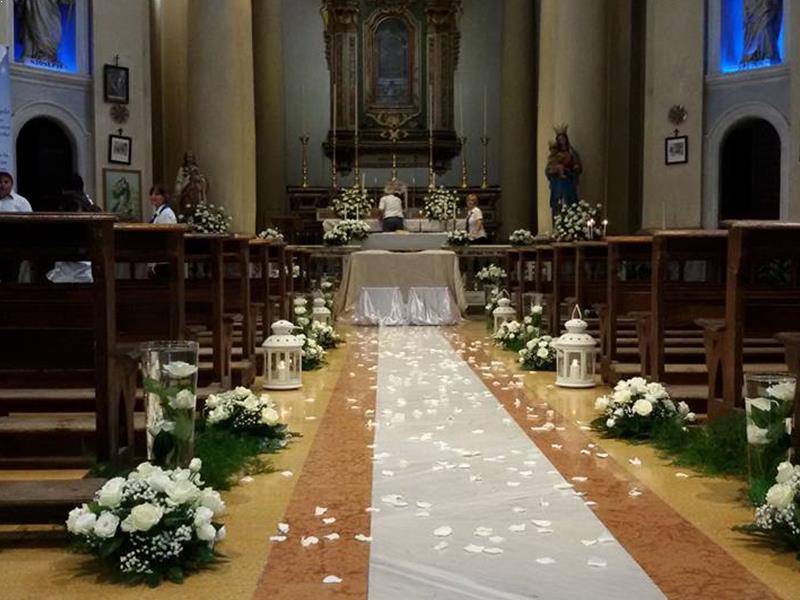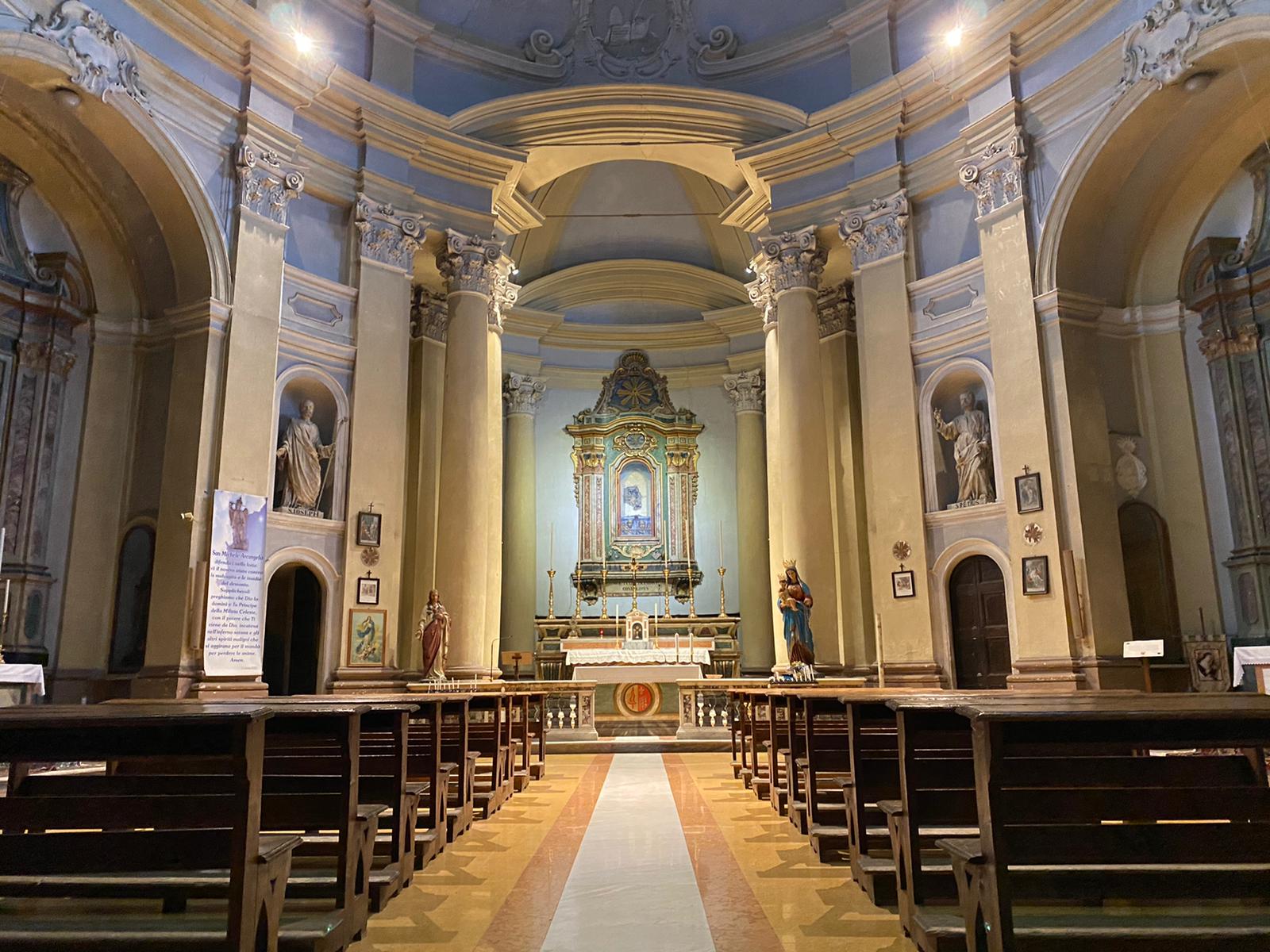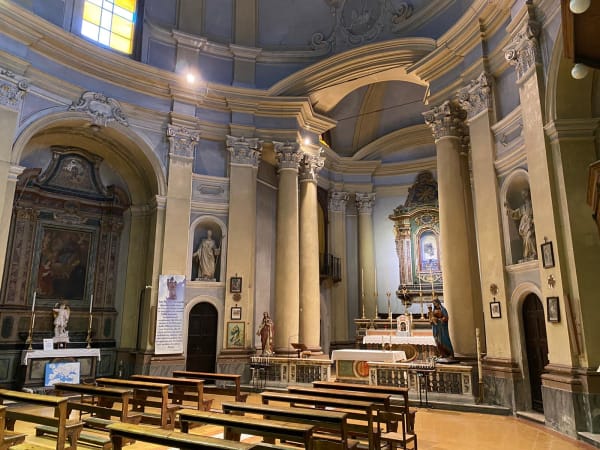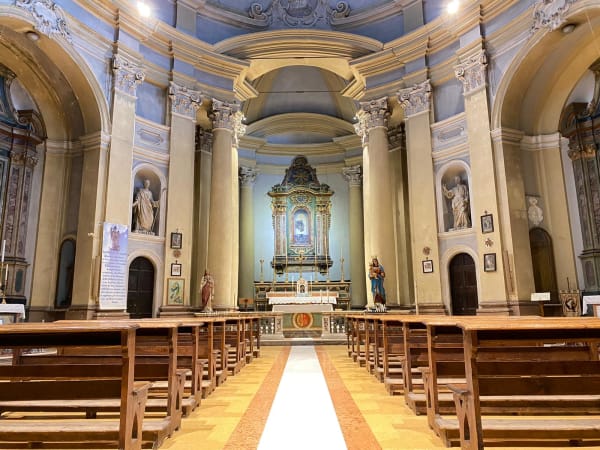The Church of Saint Pietro was built in the 13th century and it was renovated several times. The last renovation works, directed by Augustinian monk Giuseppe Casella, began in 1755 and ended in 1778.
The church was built in the 13th century, as evidenced by some documents and few wall remains that survived the subsequent renovations. Initially the building was arranged along the East-West axis but, following the significant urban changes made during the Farnesian period that led to the creation of Piazza del Comune and the construction of a new important road axis, the current Via Matteotti, it was decided to shift its orientation North-South.
The works that led to the construction of the new structure, directed by the Augustinian monk Giuseppe Casella, began in 1755 and ended in 1778.
The church, in Baroque style, has a characteristic elliptical plan, with four side altars and a high altar on the bottom.
On the side there are also two small chapels, one intended to house the baptismal font and the other occupied today by a 19th century painting depicting La Pietà.
The building, from its origins until the 1920s, was kept by the Augustinian Fathers; for this reason there are paintings in the side altars depicting saints from the Order of Sant’Agostino, such as: San Nicola da Tolentino, portrait between the angels and souls of Purgatory, and San Tommaso da Villanova, intent on distribute alms to poor persons.

In the altars closest to the presbytery, on the left, it is painted San Pietro seated on a throne of clouds which turns to Saint Antonio Abate and Saint Stefano; while on the right is visible the Madonna of Consolation with Her Child and below Saint Monica and her son Saint Agostino. On this last altar there is a statue of Saint Rita from Cascia, previously positioned in a niche.
The paintings of the four side altars are all datable to the 18th century. The work placed on the main altar is of an older workmanship. Inside a newsstand, in fact, the image of the Madonna della Misericordia called della Libera dating back to the 15th century is preserved. The painting, made in tempera on wood, presents a rare iconography showing Christ in the act of dropping arrows downwards, towards the World, where a group of faithful people find shelter under the large mantle of the Madonna. The scene therefore has the intention of proposing the image of Virgin Mary as protector of those who trust in Her. Historically during moments of calamity such as floods and droughts the niche of Virgin Mary was exposed and the people of Nepi prayed for an entire month in front of it.
Information
- Address
- Via di San Pietro
- Opening Hours
- Open during religious functions
- Ticket
- Free entrance






